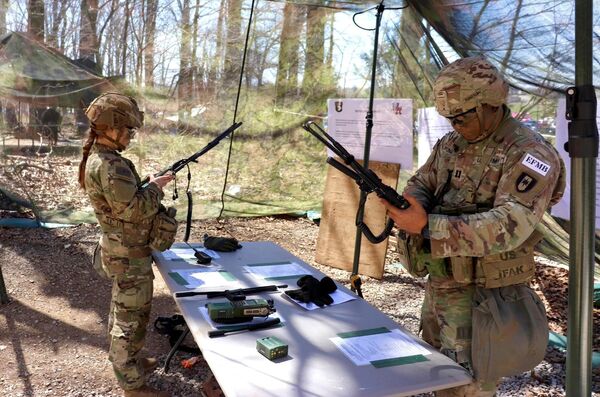
US Army soldiers with the 3rd Brigade Combat Team, 101st Airborne Division, conduct qualification exercises on AN/PRC 163 tactical radios at Fort Campbell, Kentucky, in March 2023. (US Army)
Ongoing development of the US Army's Integrated Tactical Network (ITN) capability is reaching an inflection point in terms of advanced technology integration and the policy implications of these integration efforts, and could dramatically change how the US armed forces and their allies wage future wars.
The army's decision to centre the latest iteration of advanced battlefield technologies for the ITN, known as Capability Set 25 (CS25), around the Secure but Unclassified (SBU) classification for communications and data transfers has opened a new realm of possibilities for army leaders and their international allies.
Conversely, the decision to base CS25 around the SBU classification has also forced service leaders to address policy and doctrinal questions on how the army communicates with allies during combat operations.
“My [main] challenge is managing the polarity between protecting data and sharing data,” US Army Colonel Matt Paul, project manager mission command in the programme executive office for command, control, communications-tactical (PEO C3T), said of the policy challenges facing ITN programme officials. “There are no right or wrong answers and it is not black and white,” Col Paul told reporters during a March briefing at Fort Campbell, Kentucky.
Army officials are debating the doctrinal impacts of SBU adoption into the ITN, as well as whittling down the specific technologies, systems, and programmes that will make up the CS25 portfolio, as part of the ongoing preliminary design review (PDR) of the portfolio that began in April.
Looking to read the full article?
Gain unlimited access to Janes news and more...







